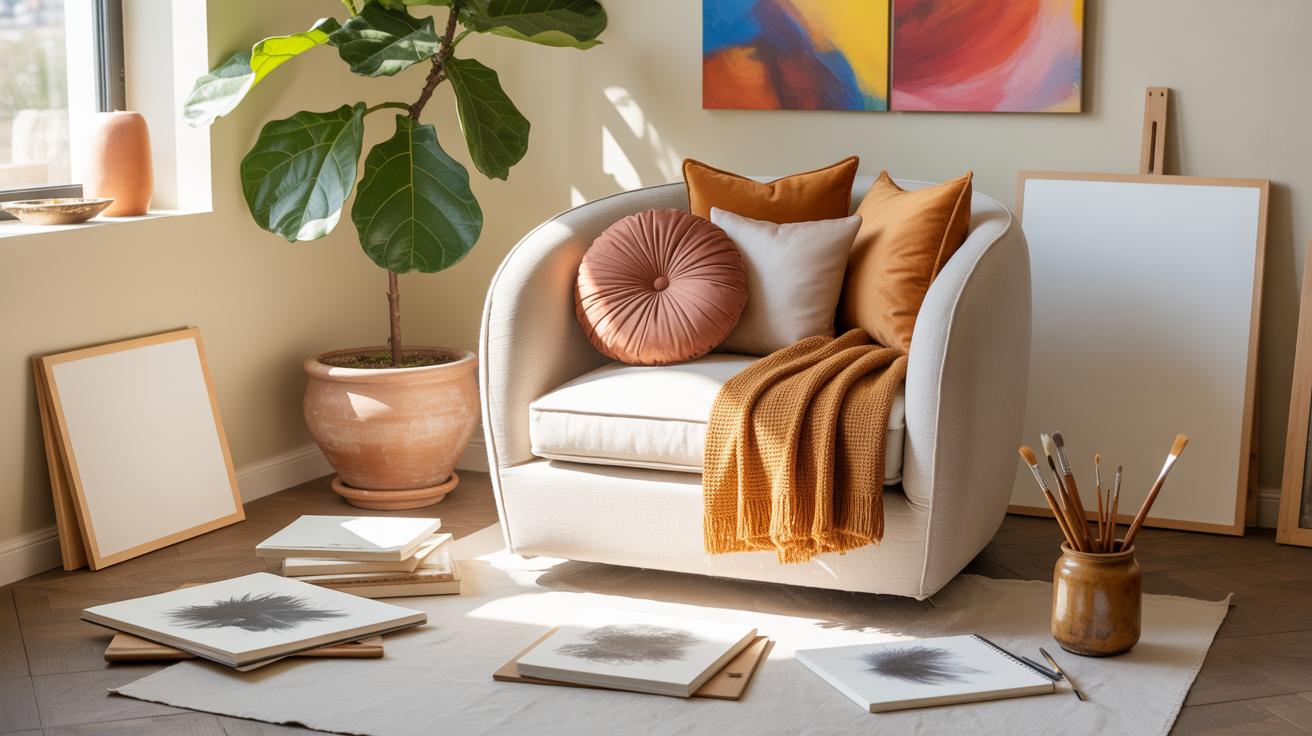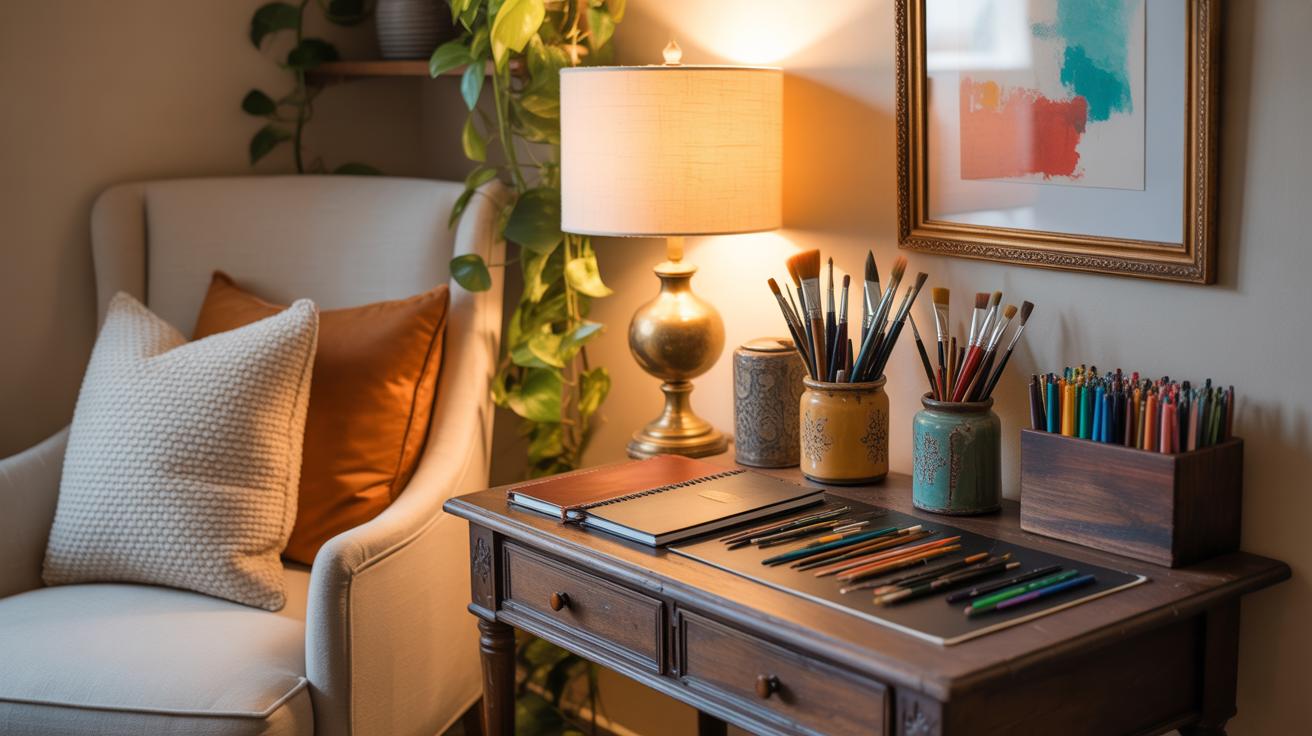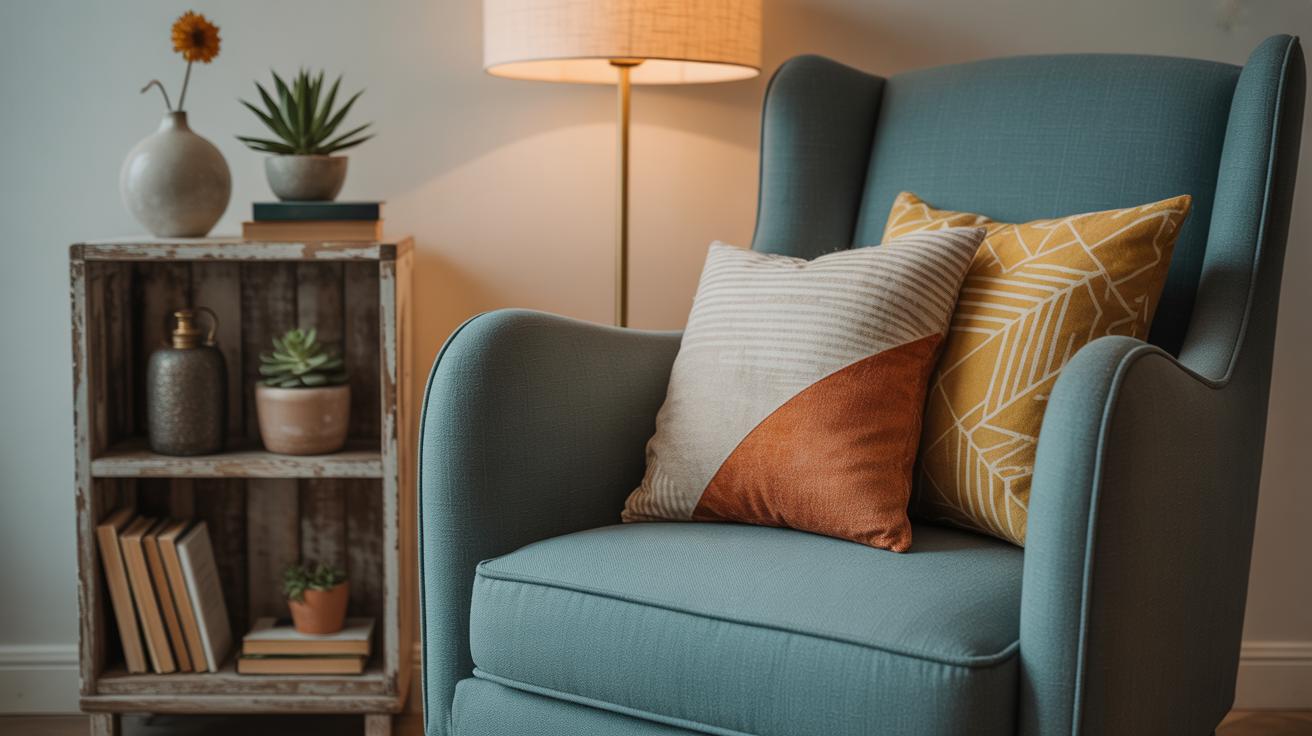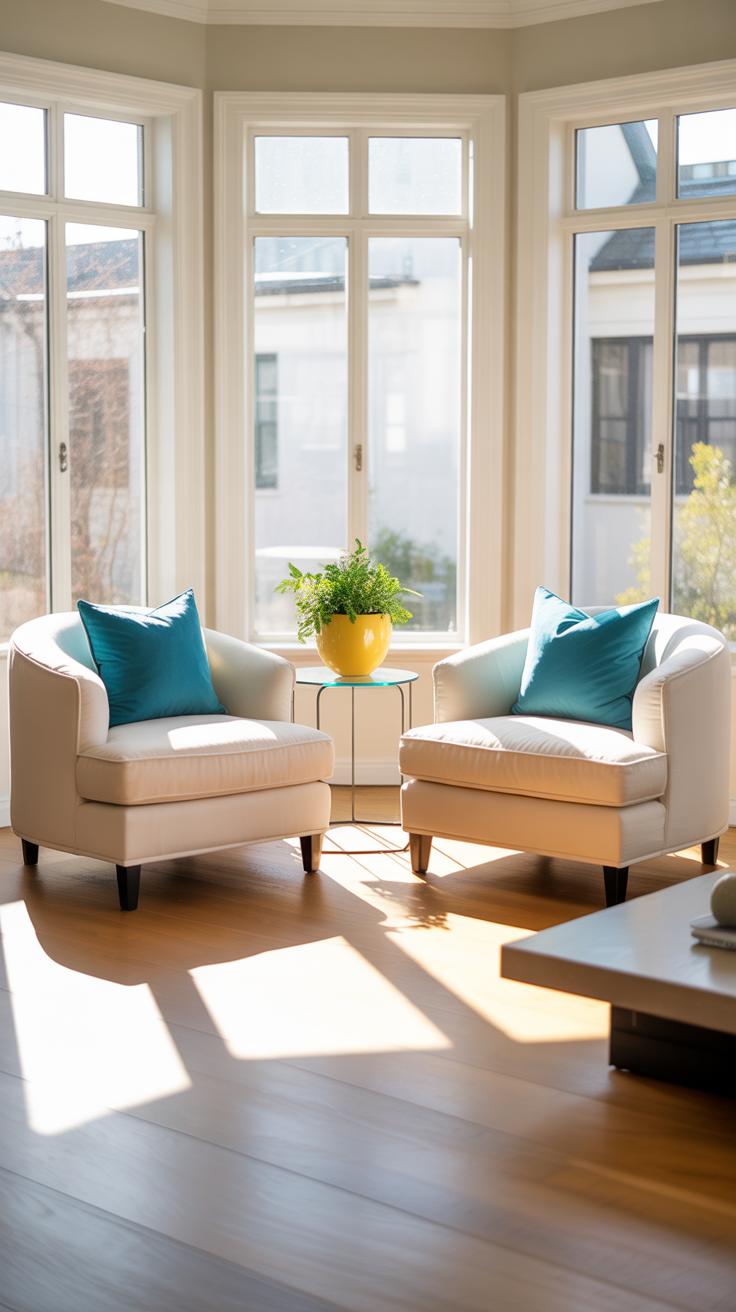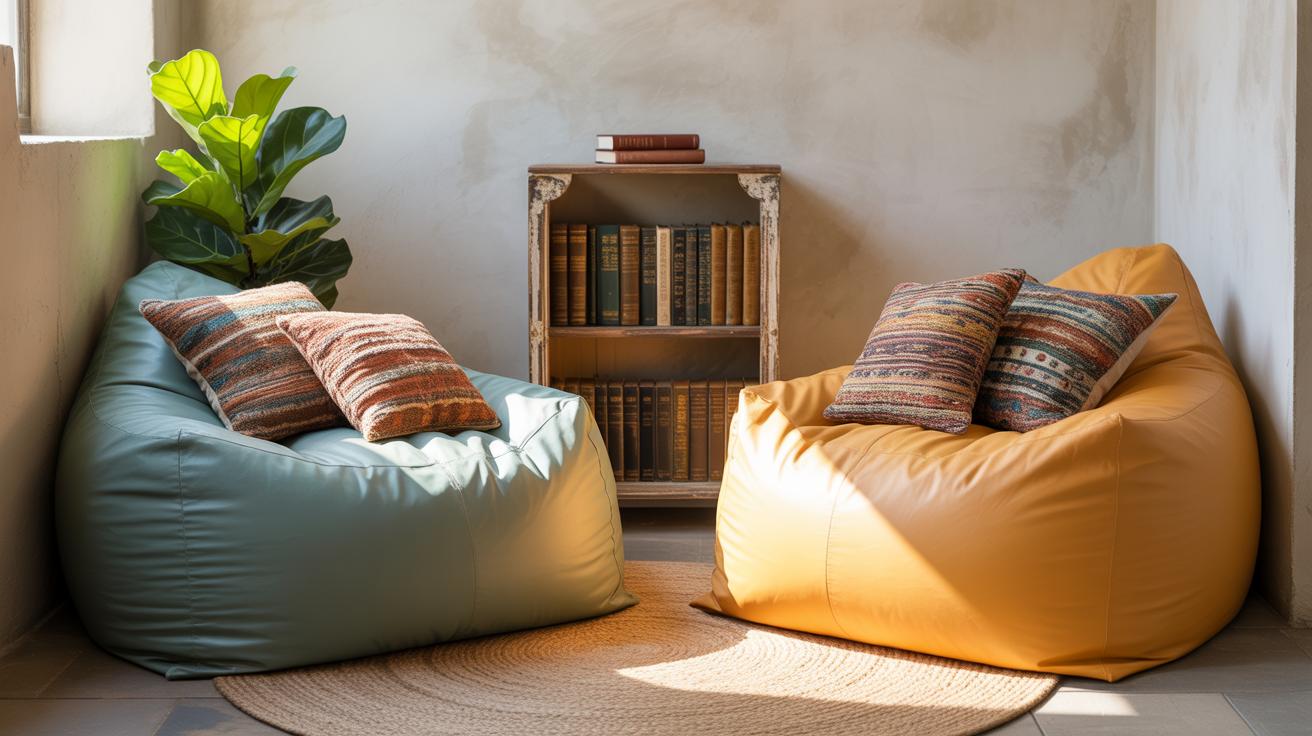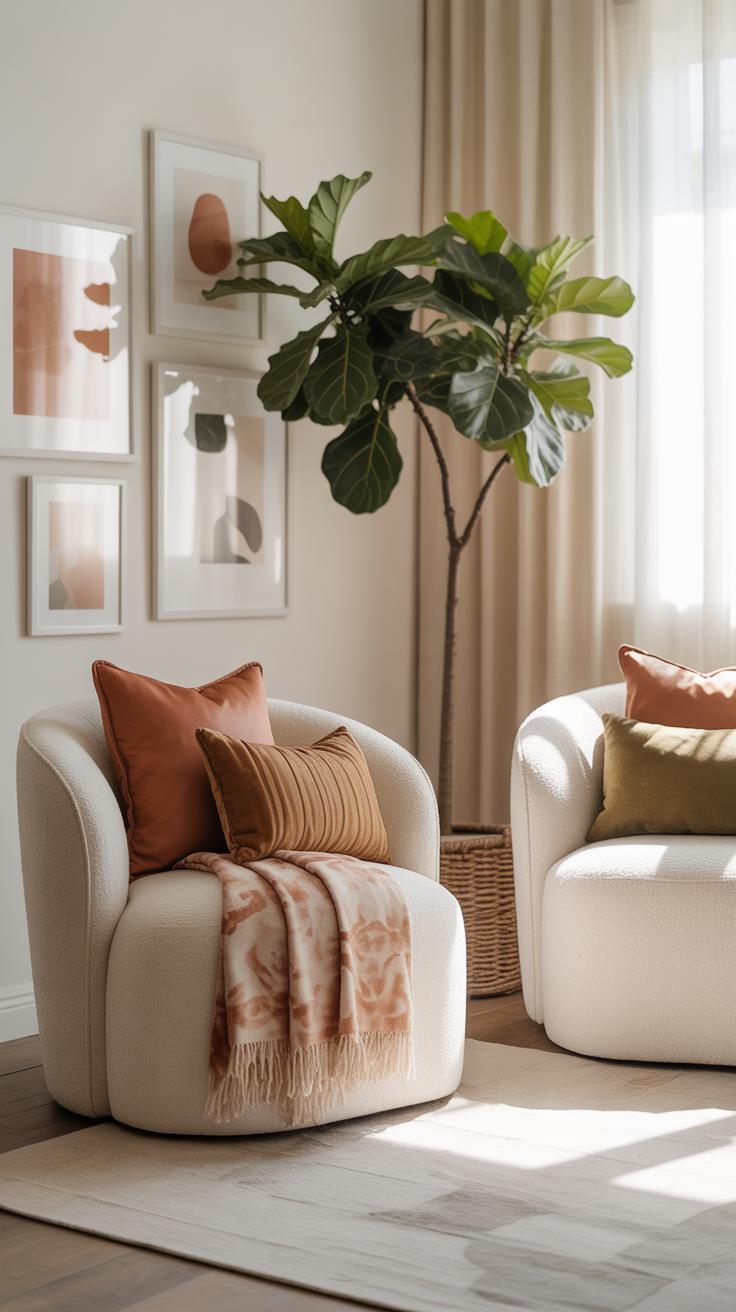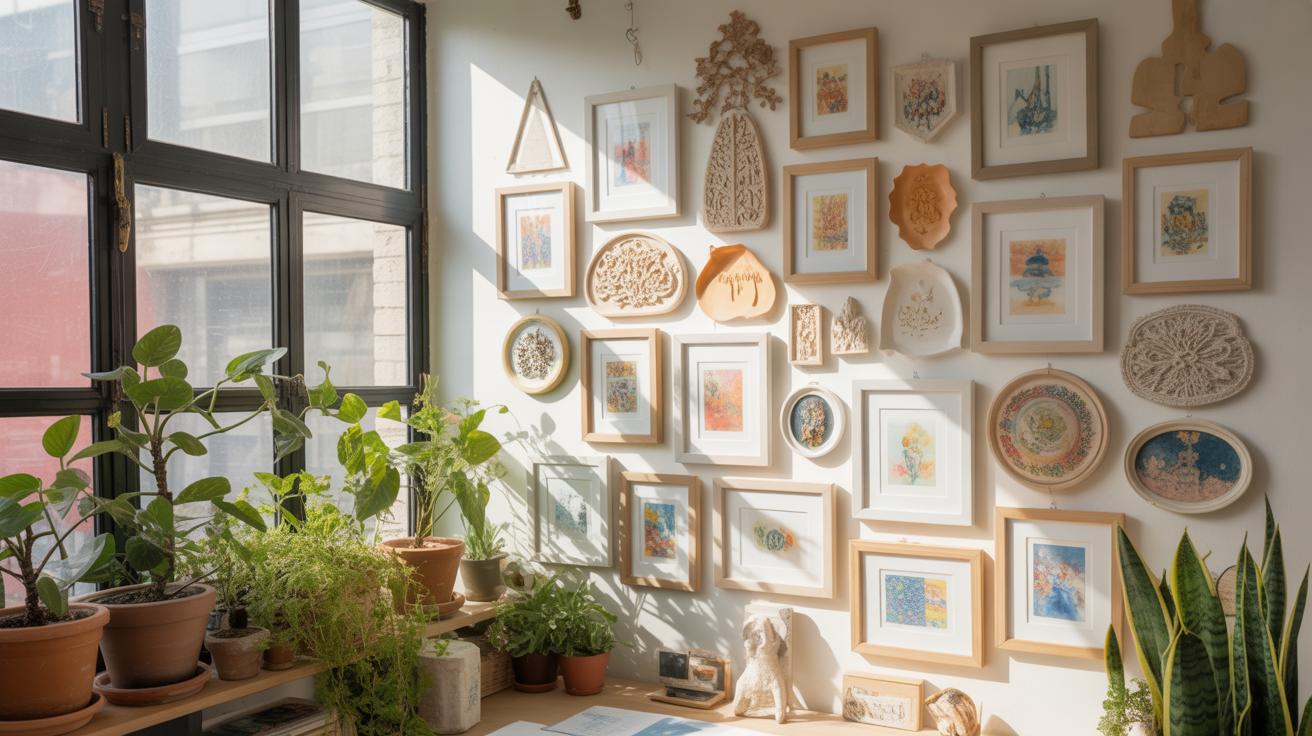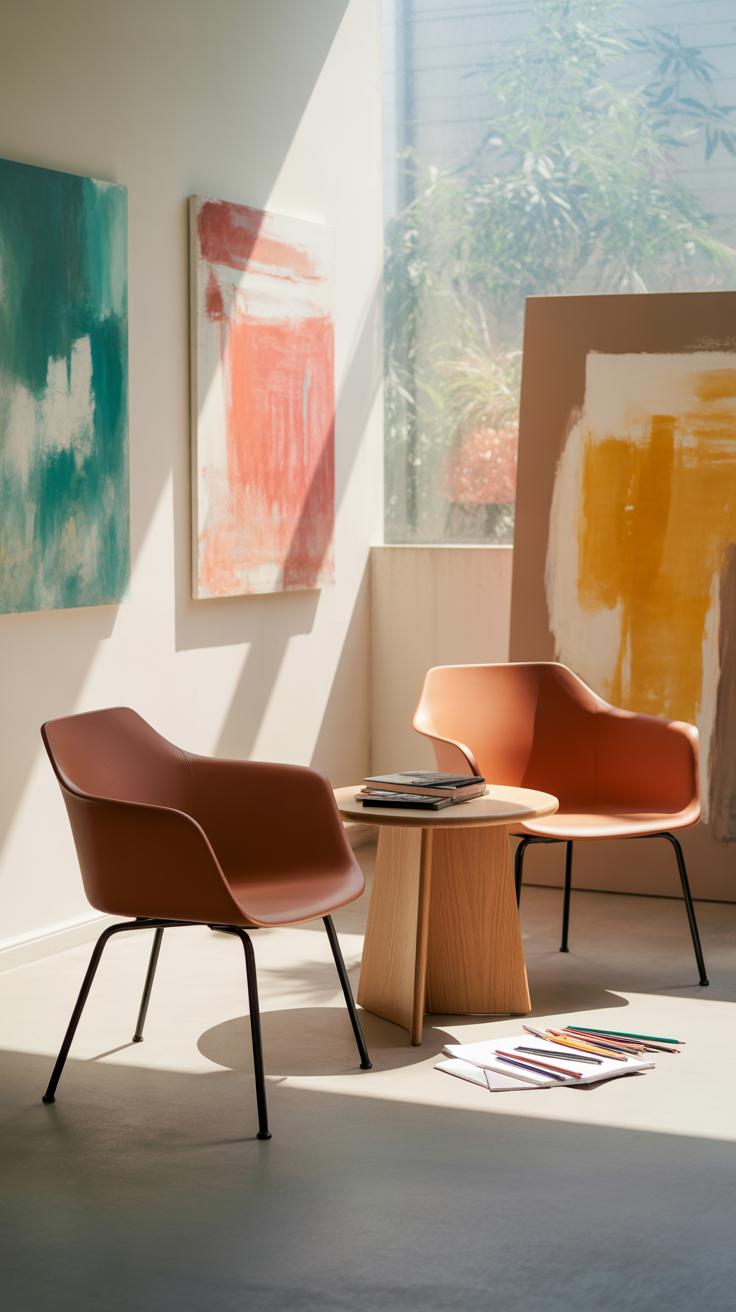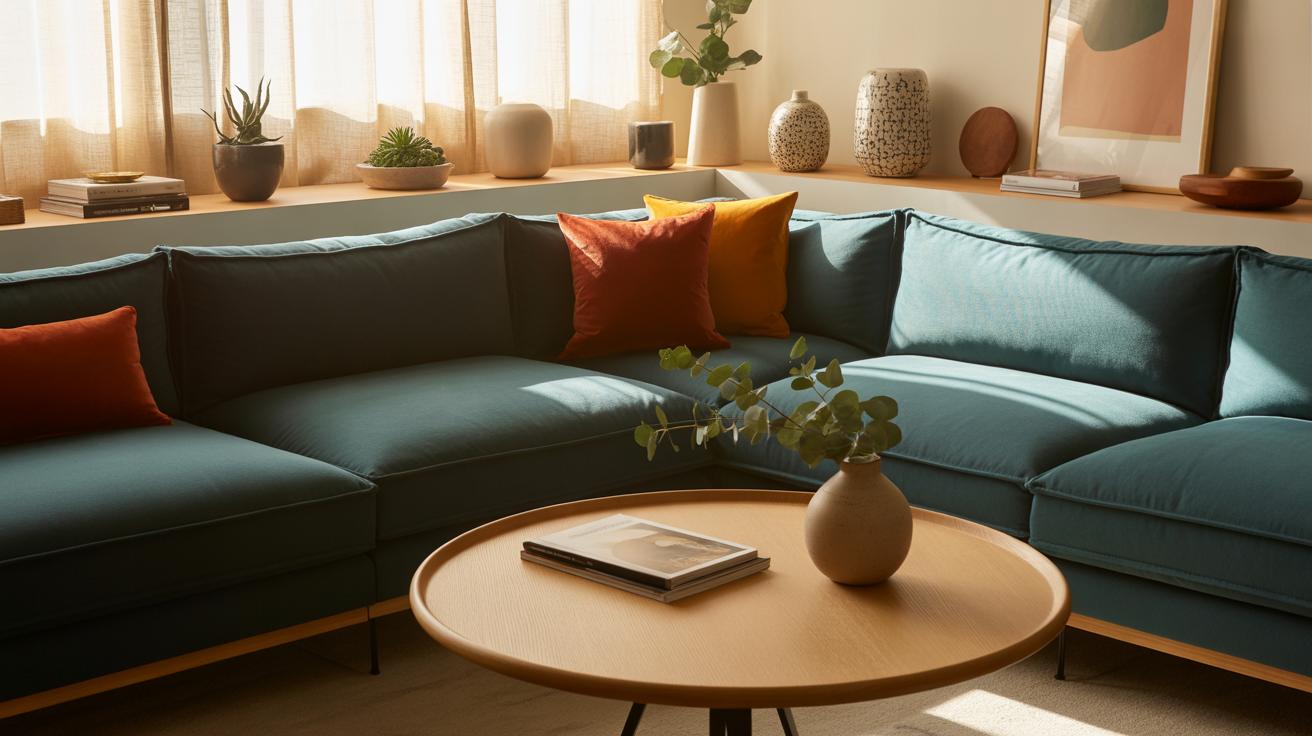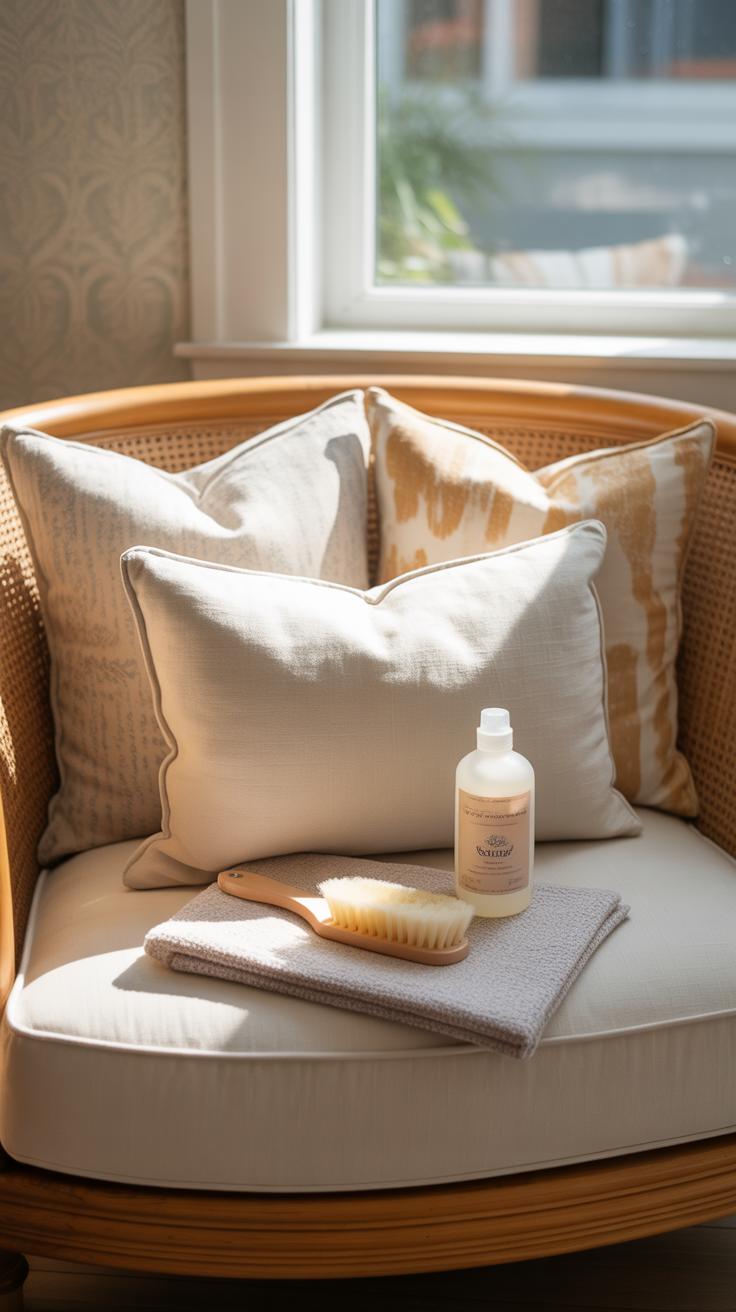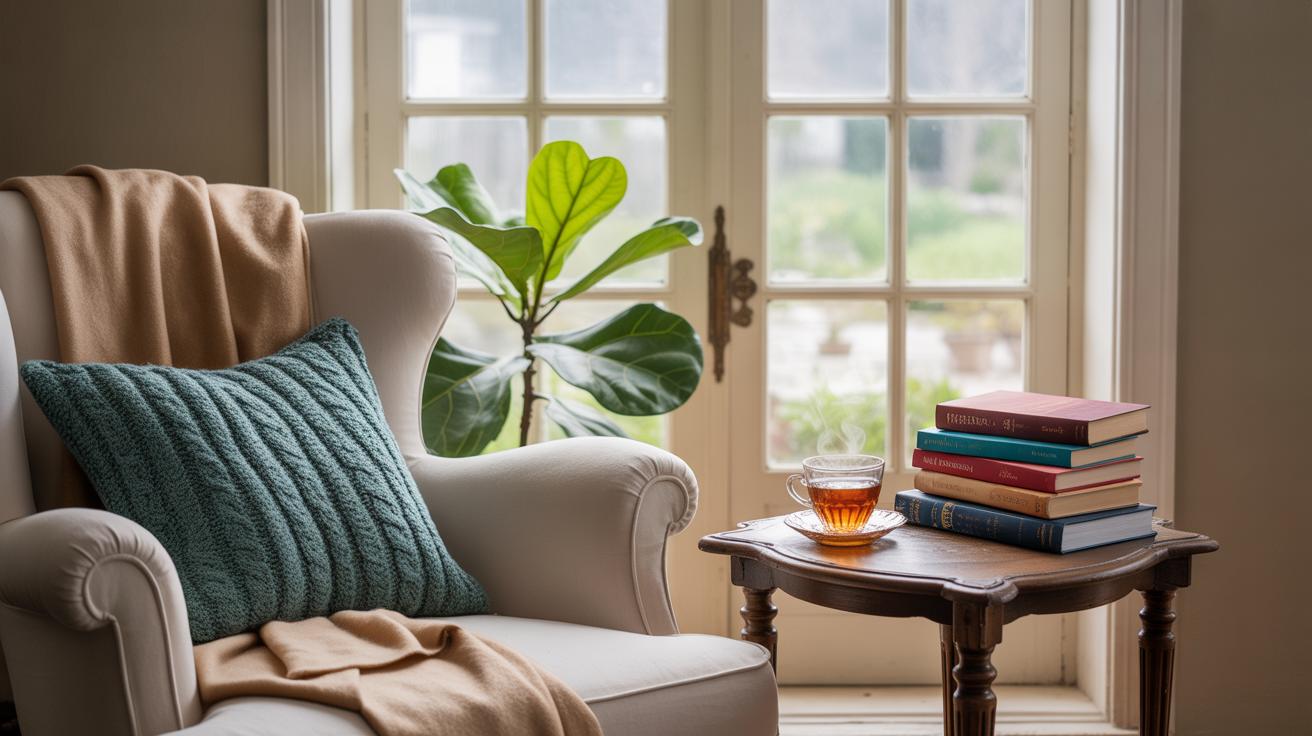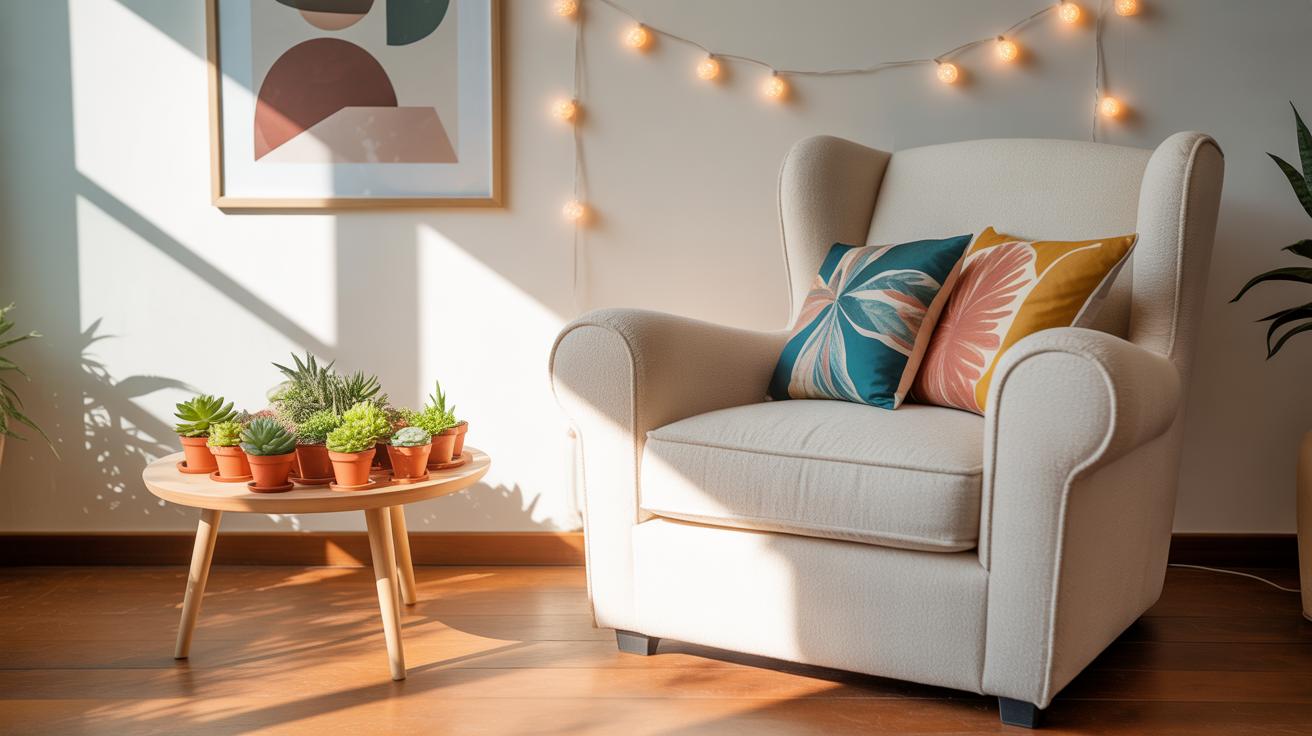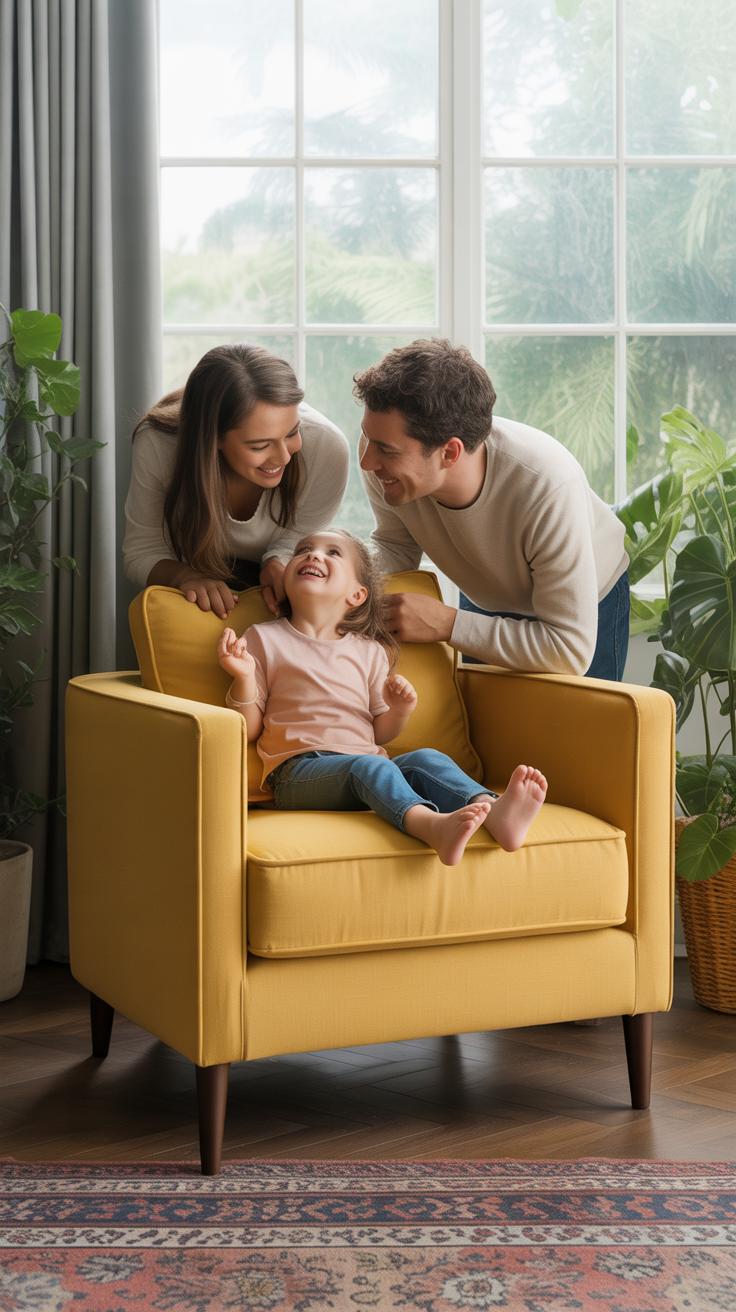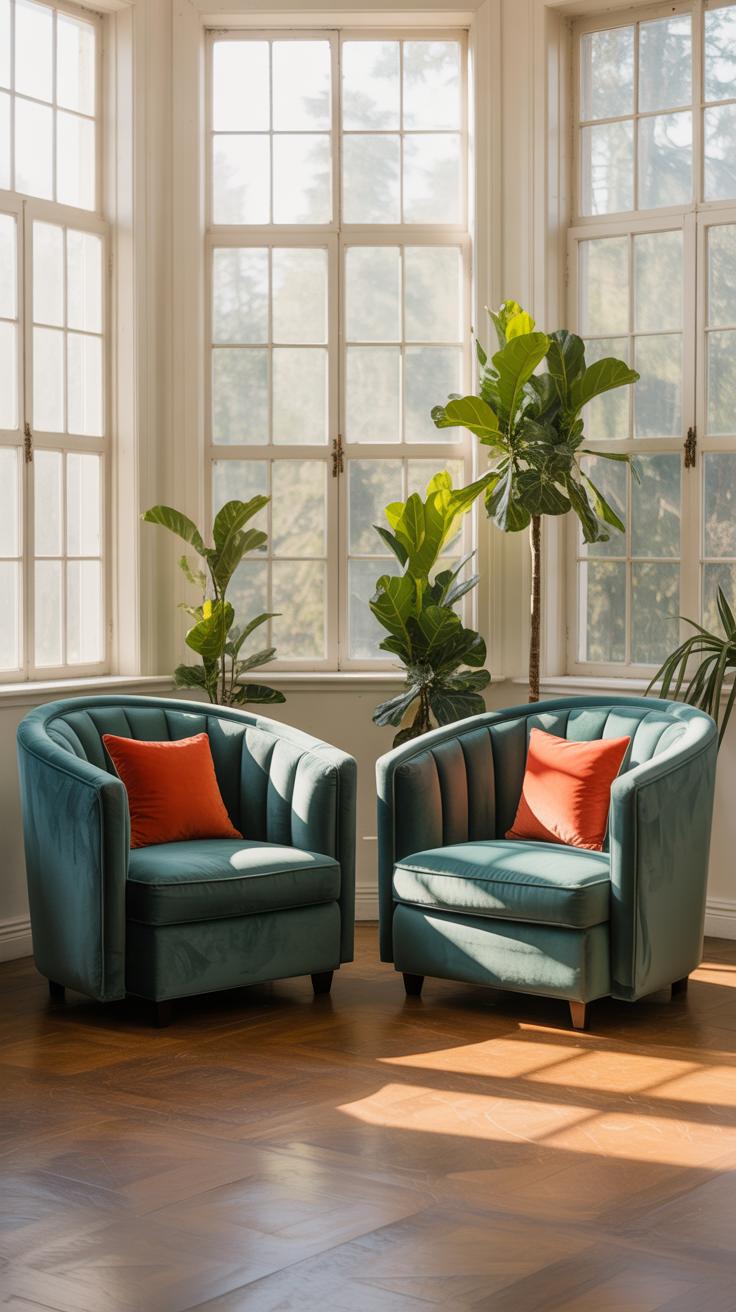Introduction
Corner chairs have a unique design that fits well in room corners, offering both style and functionality. These chairs can add a cozy element to your room decor and create comfortable spots in your art spaces. Their distinct shape makes them versatile and often a focal point in room arrangement.
This article covers practical ideas for using corner chairs to enhance room coziness and boost creativity in art areas. You’ll find examples of popular designs and clear reasons why you might want to include a corner chair in your space. Get ready to discover smart ways to make the most of this interesting furniture piece.
Corner chair history and origin
Where did corner chairs come from
The corner chair traces its roots back to Chinese furniture, where early designs favored round, compact seats built to fit snugly into room corners. This style found its way to Europe in the 17th century, influenced by trade and cultural exchange. European artisans adapted the concept, preferring sturdier wood and more angular forms to suit their tastes and interiors.
These early European corner chairs were often quite decorative, sometimes with ornate carvings that reflected the Baroque and Rococo movements of that era. They were meant not only for practical use but to showcase craftsmanship. You might picture a stately room, a corner chair offering a discreet yet elegant seating option.
How corner chairs changed over time
Initially, corner chairs featured round seats designed to fit the angle perfectly. Over time, this shifted toward square or even rectangular seats, probably for easier construction and more comfort. The chair’s shape evolved to accommodate different functions. Some designs added writing arms or storage space, transforming it into a more versatile piece.
What surprises me is how many functions people assigned to these chairs—sometimes for reading, sometimes simply to fill awkward corners. Today, you find corner chairs balancing between practical seating and decorative accents in homes and studios alike. The evolution seems less linear and more about adaptation to changing lifestyles and tastes, which makes them quite interesting for anyone setting up cozy or creative spaces.
Choosing the right corner chair style
What styles suit cozy rooms best
When you think about cozy rooms, certain corner chair styles come to mind. Soft lines, plush cushions, and warm fabrics usually feel like a natural fit. It’s interesting how something like a wingback chair or a rounded slipper chair can instantly add comfort without overwhelming the space.
Wooden frames with warm tones or slightly distressed finishes tend to blend well with snug spaces. You might want to look for upholstery in muted shades—think deep rust, olive green, or soft beige. These colors don’t shout for attention but invite you to sit down and relax for a while.
I find that chairs with slightly curved backs or enveloping arms encourage that “curl up with a book” vibe. On the other hand, rigid or minimalist styles sometimes feel a bit out of place here, though they can work if paired with soft throws or cushions. So, the style choice can depend on how you balance shape with texture in your room.
Art space friendly corner chair options
In creative corners, comfort is crucial but so is flexibility. You’ll probably sit for long stretches, sketching or brainstorming. Chairs with good lumbar support and a firm seat often make the cut. Look for materials that breathe—like cotton blends or light leather—that won’t get too warm or sticky during intense work sessions.
Swivel or adjustable height features might seem like small details, but they really help when you shift between your tools or change angles. Also, simpler shapes without overly bulky arms leave room for movement and don’t block your view of your workspace.
Personally, I’ve noticed that corner chairs with a balance between padding and shape work best for art spaces. Too soft, and you might slump; too stiff, and it gets tiring fast. Perhaps you could try out a few models to find what fits your creative flow. In these spots, function often edges out style—though finding a chair that does both is the sweet spot.
How corner chairs save space
Fitting furniture into room corners
Corner chairs have a unique way of hugging the edges of your room, making use of space that often gets ignored. When you place a chair snugly into a corner, it clears up the center area, which can suddenly feel more open and less cluttered. This frees the middle of the room for other activities—maybe a small table, a rug for stretching, or even just open walking space. It’s a subtle shift but noticeable in how the room breathes.
Think about those moments when your living area feels cramped and rearranging furniture seems impossible. A corner chair fits where a regular chair wouldn’t, slotting into that tucked-away spot quietly. You might find it’s perfect for creating a cozy nook without dominating the room.
Comparing corner chairs to regular chairs
When space is tight, corner chairs often edge out regular chairs. Here’s why they might catch your attention:
- Shape matters: Their angled backs let them nestle into corners without wasting space behind or beside them. Regular chairs stick out, demanding more clearance area.
- Seating capacity: A corner chair might accommodate more than you think by expanding seating along two walls instead of just one.
- Room flow: Because they tuck away neatly, corner chairs can help keep pathways clear, making small rooms feel less congested.
- Visual interest: They break up flat room lines and can bring character without clutter.
Still, there’s a bit of a trade-off. Some corner chairs can feel less flexible than a regular chair that you can easily move around. Plus, depending on the style, they might not work well if your room isn’t quite square or if corners have windows or radiators. But if positioning is right, they can be surprisingly functional and welcome in small, cozy spaces.
Decorating tips with corner chairs
Picking the right color and fabric for a corner chair can feel tricky, but it really comes down to how you want the chair to play with the rest of the room. If your walls, rugs, or curtains have strong patterns or bold colors, a neutral chair can help balance things out. On the other hand, if the room’s palette is pretty plain, a patterned or brightly colored chair might add just the spark it needs—even if that feels a bit risky at first.
Textures matter, too. Smooth leather can bring a sleek, modern vibe, while a soft linen or velvet invites coziness. Sometimes I’ve tried matching textures directly—like pairing a velvet chair with plush pillows in a similar fabric—and it worked better than I expected. But then again, mixing a rougher woven fabric with silky cushions can create an interesting contrast, making the corner pop visually.
Cushions and throws transform a corner chair from purely decorative to really inviting. A few well-chosen cushions can add layers of comfort and color without crowding the seat. You might want to try different sizes, shapes, or even unexpected patterns. A lightweight throw draped casually over the back or arm can soften edges and introduce another tone or texture to complement the room. It may sound simple, but these touches can make you actually want to sit there.
Think about the lighting near your corner chair, too. A nearby lamp with warm light can highlight fabric colors and create a relaxing nook. In stronger daylight, cool-toned fabrics might feel harsher, so a cushion in a warmer shade or a textured throw can help. There’s a delicate balance between making the chair stand out and keeping it cozy, and playing with small accessories often nudges it just right.
Setting up corner chairs for art spaces
When arranging corner chairs in your creative nook, think beyond just placing them against the walls. Positioning a corner chair at an angle where you can catch natural light—maybe near a window—often works well. It’s about finding that spot where you feel comfortable but also have room to spread out your materials without crowding yourself. I’ve found that setting the chair facing inward toward a work table or easel helps keep tools handy but still leaves space to move around.
Try these layouts if you’re unsure:
- Place the corner chair so your main work surface sits directly in front but a little to one side, letting you swivel or lean easily without strain.
- Use the corner walls to mount shelves or pegboards within arm’s reach of the chair, making it simple to grab brushes, pencils, or scissors.
- If you work with large canvases, the chair might be better off slightly offset, creating a mini “command center” with floor space free for standing and stepping back to review your work.
Supporting furniture really helps make the chair more functional. A small rolling cart with drawers or a low side table can tuck into the corner beside the chair, holding paints or sketchbooks. Sometimes, a portable lap desk or clipboard also complements the setup well when you move around. The key is keeping surfaces close enough so you don’t interrupt your flow searching for supplies but not so cluttered they feel cramped.
Where do you find yourself working best in your space? Experiment with shifting the chair and horizons of your art zone. It might feel awkward at first, but a slightly unconventional placement often sparks new ideas—or just makes the whole process less frustrating.
Corner chairs maintenance guide
How to clean different surfaces
Cleaning your corner chair depends largely on its material. For wood, start with a soft cloth to dust regularly. If stains appear, dampen the cloth slightly with water or a mild soap solution, but be careful not to saturate the wood. Too much moisture can cause warping or damage the finish. Sometimes I notice a bit of buildup around joints—just a gentle scrub with a toothbrush can help without harming the surface.
Fabric chairs need a different approach. Vacuum first, to remove dust and crumbs hiding in seams. When a spot shows up, check what kind of fabric you have—some can handle a mild detergent, others aren’t so forgiving. I usually dab carefully rather than scrub; rubbing tends to spread the stain or damage fibers.
Leather requires special attention. Wipe off dust or dirt with a dry cloth. For deeper cleaning, use a specialized leather cleaner or a mixture of water and mild soap—but test on a hidden spot first. Leather can dry out, so applying a conditioner every few months helps keep it soft and less likely to crack. I’ve sometimes let it slide and paid for it later with peeling surfaces.
Tips to extend chair lifespan
To protect your corner chair, place it away from direct sunlight whenever possible. Sunlight can fade fabrics and dry out wood or leather. If your chair is near a window, maybe think about curtains or blinds that can block harsh rays, at least during peak hours.
Also, consider how you use the chair. Avoid excessive weight on one side or frequently shifting it across the floor without lifting—it can loosen joints or damage legs. A thin rug or felt pads under the legs can reduce wear on both the chair and your floors.
Regular checks for loose screws or joints pay off. Tighten what’s needed before it gets worse. It might feel tedious but catching small problems early really makes a difference.
Finally, don’t overlook air quality. In damp rooms, wood can warp, and fabric might develop mold. If your space is humid, a dehumidifier or better ventilation could save your chair from slow damage you don’t immediately see.
Corner chairs benefits checklist
Corner chairs bring a unique set of advantages to any room, especially when you’re aiming for comfort, saving space, and adding some visual interest. You might find it surprising just how much a simple chair designed for corners can change the vibe and function of a space.
Consider comfort and ergonomics first. Corner chairs often offer unexpected support because their angled design naturally encourages better posture. The way they wrap around a person can feel more secure, almost like a gentle hug. It’s not just about looks; you can actually sit for longer periods without feeling awkward or strained.
Now, about space — they’re fantastic for rooms where every inch counts. Instead of squeezing a regular chair into the middle of the room or against a flat wall, a corner chair slips neatly into corners, freeing up the main floor area. Think of small studios or creative nooks; corner chairs keep those spots usable rather than cluttered.
Then there’s the aesthetic angle. These chairs introduce interesting shapes and angles that break the monotony of typical furniture layouts. They can make corners feel intentional, not wasted. Plus, corner chairs often come with design details that enhance a room’s character, whether it’s a mid-century vibe or modern minimalism.
So, if you’re wondering whether a corner chair is worth it, ask yourself: how much do you value a seat that feels cozy without taking over the room? Or how often do you notice your space looking more layered and put-together just because the corners aren’t empty? These little things add up.
Common mistakes using corner chairs
One of the most frequent errors with corner chairs is picking the wrong size or style. A bulky corner chair in a small room can make the space feel cramped, almost claustrophobic. On the flip side, a tiny chair in a large room might get lost, failing to add any meaningful presence. I’ve seen people buy bold, heavily patterned corner chairs for minimalist rooms, and somehow, it just doesn’t sit right. The chair ends up clashing rather than blending, making the whole space feel disjointed.
Placement also trips people up. Placing a corner chair so it blocks a natural pathway can make movement awkward, even frustrating. Sometimes, the chair sits under harsh overhead lights, making it uncomfortable to settle into, or in a dim corner with no actual lighting nearby—a spot that feels more neglected than cozy. You want your corner chair to invite you in, not repel.
Here are some ways to fix these issues:
- Measure your space first and consider the chair’s proportions carefully before buying.
- Match the chair’s style with the room’s overall vibe—don’t force bold where calm fits better.
- Test different placements in the room to see if any block walkways or feel too exposed to harsh lighting.
- Add task lighting like a floor lamp or wall sconce near the chair if needed.
Do you want your corner chair to feel like a natural part of the room or just an afterthought? The answer can guide your choices more than you might expect.
Example corner chair room setups
Cozy reading nook setup
Picture a corner chair tucked into an alcove surrounded by tall bookshelves, their wood grain worn a little from years of use. The chair itself might be plush, maybe a bit overstuffed—nothing too formal. A soft throw blanket draped casually over one arm invites you to settle in. Nearby, a small side table holds a mug of tea or a cup of coffee, within arm’s reach.
Soft lighting is key here. A floor lamp with a warm bulb casts gentle pools of light, perfect for losing yourself in a book without straining your eyes. Natural light from a nearby window, when available, adds a freshness to the space, though too much glare can be tricky. I’ve found that layering with curtains or blinds helps control this.
This setup encourages lingering. The corner chair becomes more than just seating; it’s a personal retreat. You might wonder how to keep distractions at bay. Well, the partial enclosure the corner provides feels surprisingly helpful—it’s like telling the room, “This space is for quiet.” A few plants or subtle artwork can complete the vibe without overwhelming.
Creative studio corner example
Imagine a corner chair amid a modest art studio, surrounded by paints, brushes, and sketchpads. The chair sits close enough to a table or easel that you can lean over to grab tools, but not so close that the workspace feels cramped. It’s a spot to pause, brainstorm, or just rest tired hands after hours of creation.
Lighting here takes on a different role—bright, clear, sometimes a bit harsh, but necessary. A combination of natural daylight, if possible, and adjustable task lamps keeps the focus sharp. You might experiment with lamp angles until shadows fall just right. It’s a little fiddly but makes a noticeable difference.
Comfort doesn’t have to mean sinking in. The chair might be firmer, supporting better posture for long work sessions. Yet it still invites you to sit back and reflect. I’ve noticed that having a defined corner chair space in a studio helps break up the room. It’s a kind of mental reset spot between bursts of intense focus.
Conclusions
Corner chairs bring both charm and practical use to your rooms. They fill corners that might otherwise be wasted and give you comfortable seating in a creative style. With many styles available, you can pick one that fits your taste and needs perfectly.
Adding a corner chair boosts your room’s comfort and creativity. Consider how it fits into your daily routine and room layout. Use the ideas shared here to select and place your corner chair for the best results. This small change can make your space more inviting and usable.

